Many of us perceive chickens as just ordinary farm animals providing eggs and meat for humanity. But in fact, there is a fascination that lies within. These extraordinary creatures belong to rare breeds that unveil the amazing diversity found all around the world with their awe-inspiring patterns resembling pieces of artwork to endearing personalities that touch our hearts. These exceptional chickens transcend being other than livestock…they are cherished living treasures. If you’re a lover of chickens and enjoy learning something new, get ready to be captivated, as this blog post entails rare chicken breeds and where they live.
What Are Rare Chicken Breeds?
Rare chicken breeds are created through intricate breeding to have valuable qualities and serve different purposes. These qualities cover a range of features that include:
- The ability to lay eggs
- Flavor and consistency of their meat
- Physical appearance
- Temperament
The chicken trade also looks for other breeds of chickens that are known as exhibition breeds. These birds are bred for their visually appealing characteristics, which add to the charm of poultry shows and enthusiast collectors. Each of these rare breeds is truly unique as their genetics tell a story of ingenuity in shaping these animals to meet human desires and preferences.
Where To Find Rare Chicken Breeds
Hatcheries
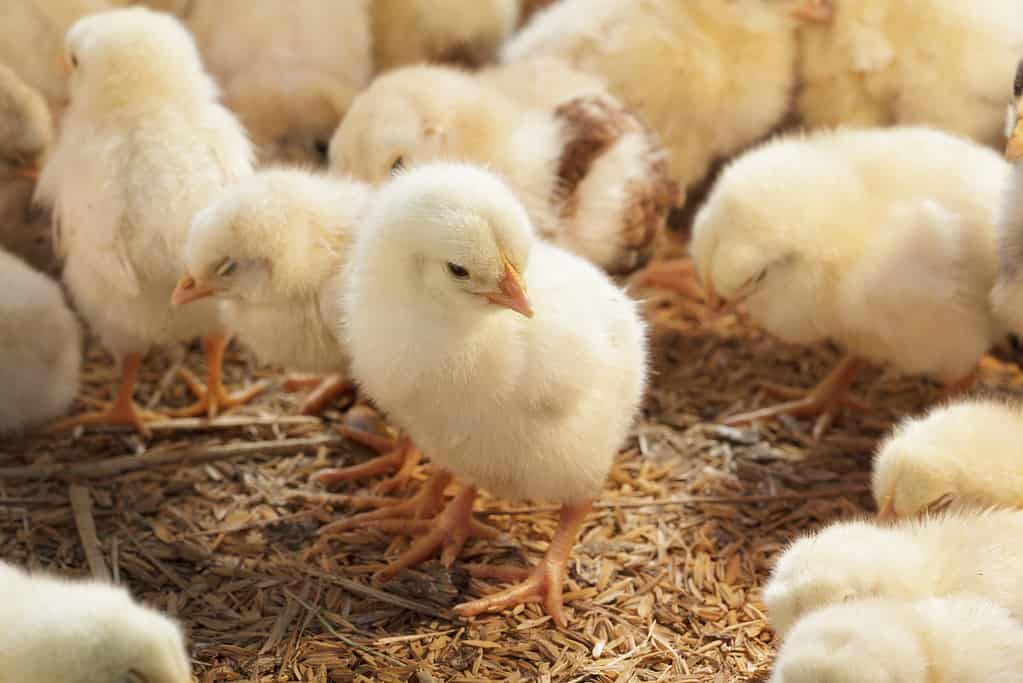
Just like an incubator keeps chicken eggs warm, a brooder is also needed for baby chicks after they hatch.
©Toa55/iStock via Getty Images
A chicken hatchery is a place created for the process of incubating, hatching, and providing initial care to chicken eggs. The main goal of a chicken hatchery is to ensure the production of viable chicks that can be raised for purposes such as meat production, egg laying, exhibition purposes, and occasionally for preserving ornamental or rare breeds.
Hatcheries also collaborate closely with organizations focused on preserving poultry breeds to ensure the protection of these breeds for generations to come. Also, hatcheries can be found in areas depending on where the breed originates from and how popular the rare chicken is.
Poultry shows
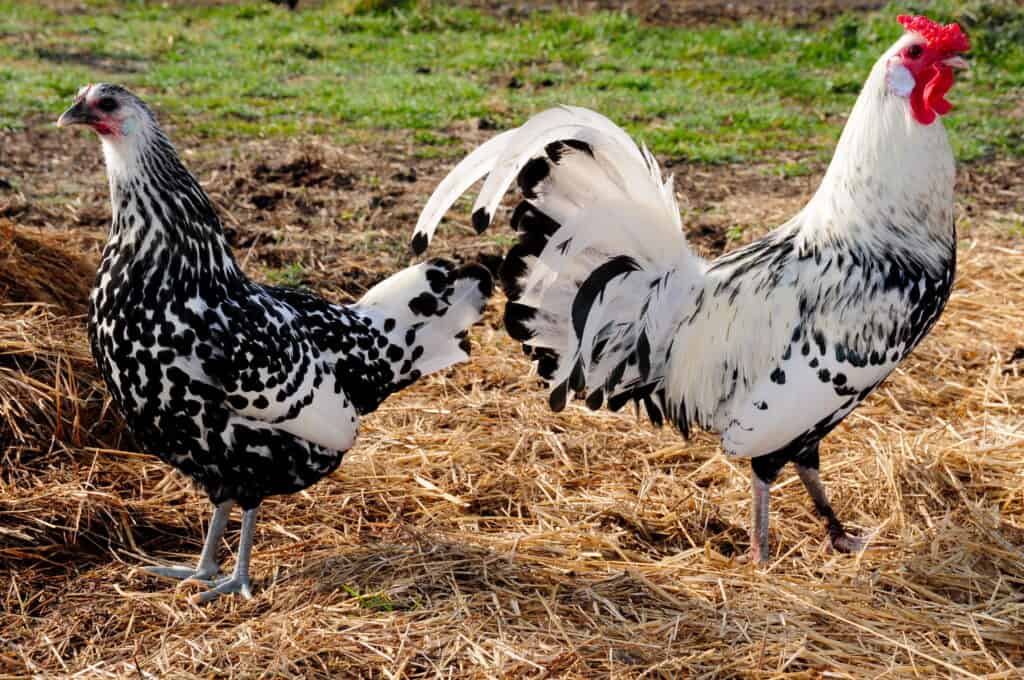
Hamburg chickens are known for their beautiful feathers, which make them good show birds.
©Amy McNabb/Shutterstock.com
Poultry exhibitions are gatherings where chicken enthusiasts come together to showcase and celebrate different breeds of chickens. These events can take place locally, regionally, and even across countries. Attendees can admire their colors, patterns, and their peculiar attributes. It’s an opportunity for everyone, regardless of whether they raise chickens or not, to gain knowledge about these creatures while having a great time.
How To Take Care of Rare Breeds
- Research the breed: Make sure to conduct research on the history, characteristics, behavior, and any specific requirements of the breed before acquiring rare chickens.
- Housing: Create a cozy enclosure for your chickens, ensuring that they have sufficient airflow, protection from predators, and enough space to roam around freely. Keep in mind that certain chicken breeds may have temperature preferences, so accommodate them accordingly.
- Nutrition: Make sure you give your chickens a balanced diet that suits their breed and purpose. Providing them with quality feeds specially designed for different stages of growth to ensure they get all the necessary nutrients. Don’t forget to offer them water and consider giving them treats, like fruits and vegetables.
- Health care: Make it a habit to regularly check your chickens for any signs of sickness, injuries, or pests. It’s crucial to build a connection with a poultry veterinarian who has experience with rare chicken breeds.
- Socialization: Because you are dealing with a rare breed, they do exhibit temperamental behaviors. It is important to observe their interactions and provide them with room to establish a hierarchy without overcrowding.
- Environmental enrichment: To keep the chickens mentally and physically stimulated, add perches and dust-bathing areas.
- Regular monitoring: Make sure to observe your chickens. Watch how they behave, how they feed, and keep track of egg production. Being vigilant can help avoid significant issues down the line.
- Join a chicken community: Connect with enthusiasts of breeds, whether through online platforms or local poultry clubs. Sharing experiences and seeking advice can be quite beneficial when it comes to nurturing and caring for these breeds.
- Patience: It may take some time to understand their requirements and habits. Stay patient, especially when adjusting to your care routine.
1. Golden Campine Chicken
The Golden Campine traces its roots back to medieval times. Originating from the Southeastern Netherlands and northeastern Belgium. Their feathers display a sophisticated design of black and gold hues that lend them an air of royalty.
Golden Campines are renowned for their ability to lay eggs. Hens can produce around 200 medium eggs each year. Because of their efficient egg production, this chicken is a popular choice for backyard flocks. In addition, this rare chicken has a great talent for finding food and enjoys snacking on tasty insects.
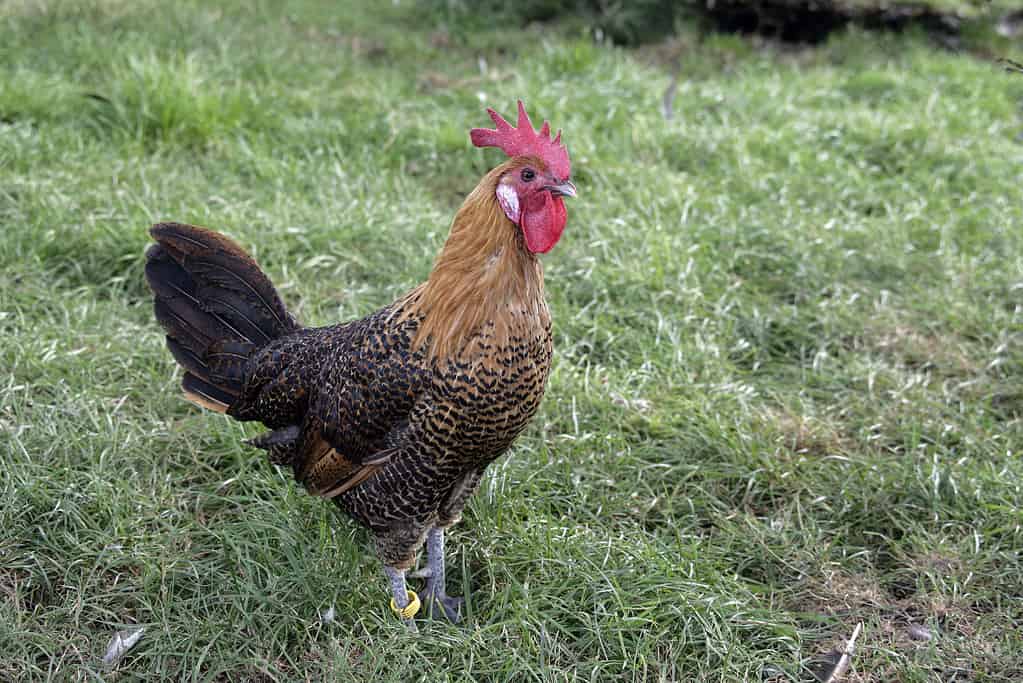
Their feathers display a sophisticated design of black and gold hues that lend them an air of royalty.
©Erni/Shutterstock.com
2. Modern Game Chicken
Modern Game chickens display a slender physique, thin neck, and long legs. Some might compare these chickens to runway models as they confidently showcase their impeccable posture as they strut their stuff.
In addition, the Modern Game chicken originated in England, where they come in varieties of black, blue, and red markings. Furthermore, these feisty chickens are not bred for meat and egg production. Instead, their main value stems from their attractiveness.
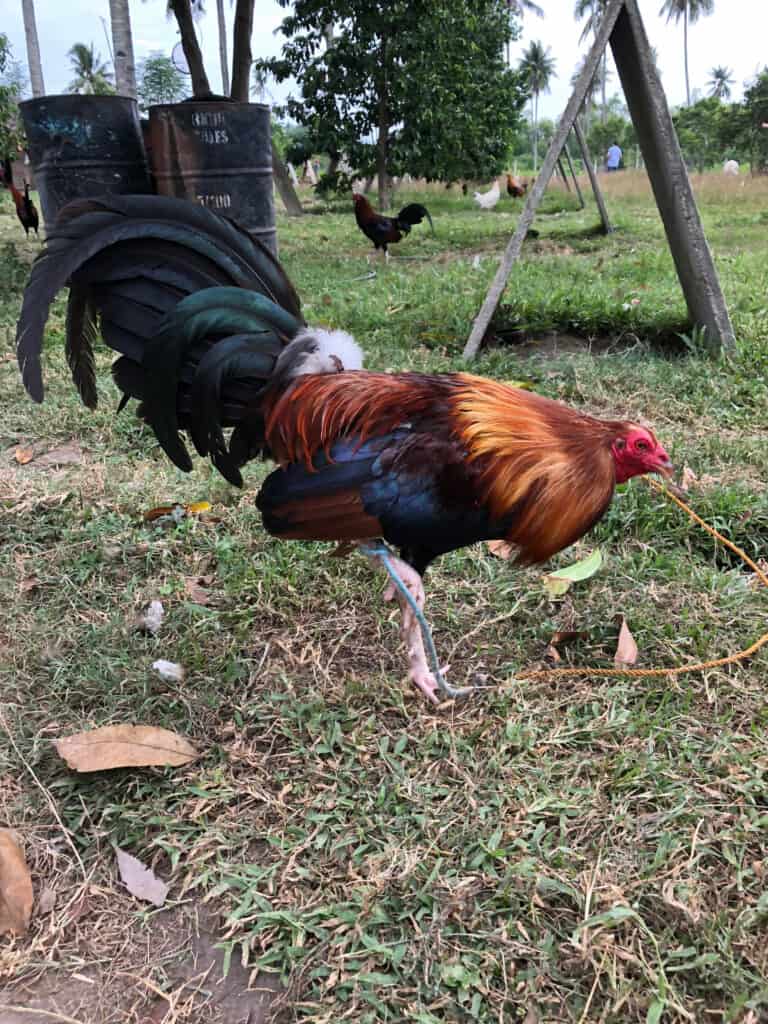
Modern Game chicken originated in England, where they come in varieties of black, blue, and red markings.
©patrimonio designs ltd/Shutterstock.com
3. Crevecoeur Chickens
Originating in northwestern France around the 16th century, Crevecoeur chickens are one eye-catching bird. They feature feathered crests on their heads, which look like fashionable hats. Followed by fluffy black feathers covering its body and a sturdy physique.
Crevecoeur chickens were initially bred with the purpose of providing meat and eggs. However, over time, their value grew significantly, and one would present these chickens as gifts to royalty. Therefore, highlighting their prestigious status as a cherished breed.

Crevecoeur Chickens
©Utilisateur: Blaise.desaintjouin, CC BY-SA 2.5, via Wikimedia Commons – License
4. Vorwerk Chicken
The Vorwerk chicken originated in Germany and was created by Oskar Vorwerk in the 1900s. Oskar Vorwerk was not a poultry breeder but, in fact, a German engineer. Despite his lack of knowledge of the chicken industry, he managed to create this rare chicken. In addition, the Vorwerk chicken consists of four varieties, including the Buff Sussex, Buff Orpington, Lakenvelder, and Andalusian chicken.
Vorwerk chickens provide a constant supply of 170 eggs per year, making them a perfect addition to backyard environments. Moreover, you just might gain a new feathery friend as they love to surround themselves with people.
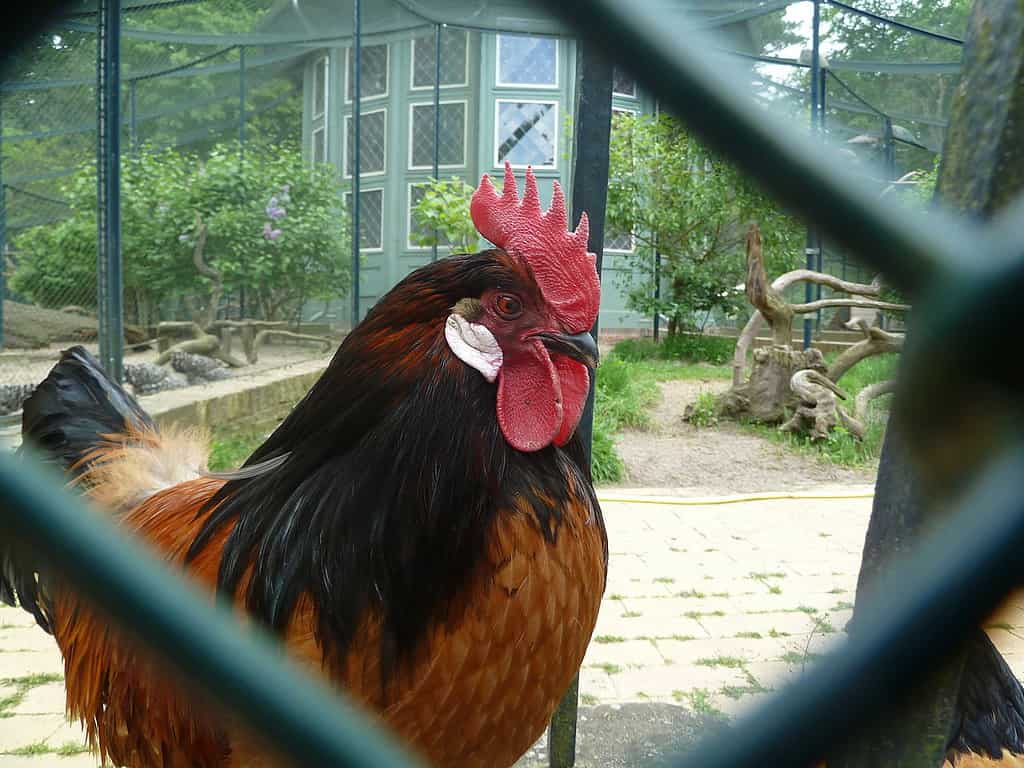
Vorwerk chickens provide a constant supply of 170 eggs per year, making them a perfect addition to backyard environments.
©Ekem, CC BY-SA 4.0, via Wikimedia Commons – License
5. Ayam Cemani Chicken
Ayam Cemani chickens are easily recognized by their black appearance, including their feathers, skin, beak, and internal organs. This unique genetic condition, known as fibromelanosis, leads to an abundance of pigmentation. Upon further inspection, when their tail shimmers in the sunlight, a pop of green-colored feathers becomes visible.
Indonesia is the homeland of the Ayam Cemani chicken, which holds mystical importance in Indonesian culture. These chickens are believed to hold symbols of good fortune and safeguarding.

Ayam Cemani chickens are believed to hold symbols of good fortune and safeguarding.
©Bass001/Shutterstock.com
6. Polverara Chickens
Polverara is a rare chicken that’s found in the town of Polverara in Italy. These chickens display a peppered blend of black and white feathers, adding to their charming appearance. Polverara chickens lay 150 light brown eggs each year and provide families with their tender and flavorful meat.
Due to interbreeding, Polverara chickens are now safeguarded among its community. Therefore, ensuring that future generations can relish and appreciate a part of Italy’s heritage and traditional farming practices.
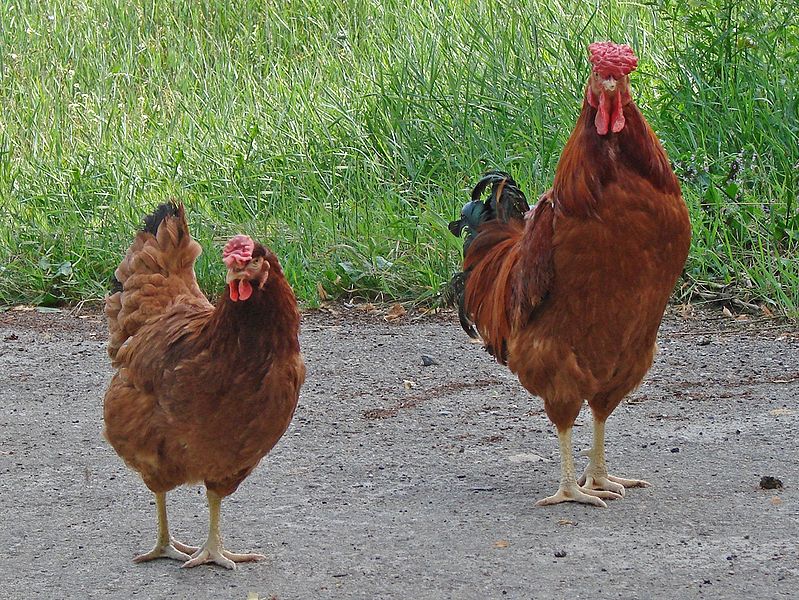
Polverara Chickens
©Timophey Tkachik/CC BY-SA 3.0 – License
7. Onagadori Chicken
The Onagadori chicken is distinguished by its lengthy and striking plumage. Originating from Shikoku in Japan, its feathers can reach lengths of over 12 feet. Hence, the reason behind its name, Onagadori, which translates to “bird with a tail” in Japanese, accurately captures the distinctiveness of this chicken’s defining feature.
The Onagadori chicken is one of a kind because of an interesting trait. Did you know that its tail feathers grow continuously throughout its lifespan? Which, of course, sets them apart from other chicken breeds that experience a plateau in feather growth.
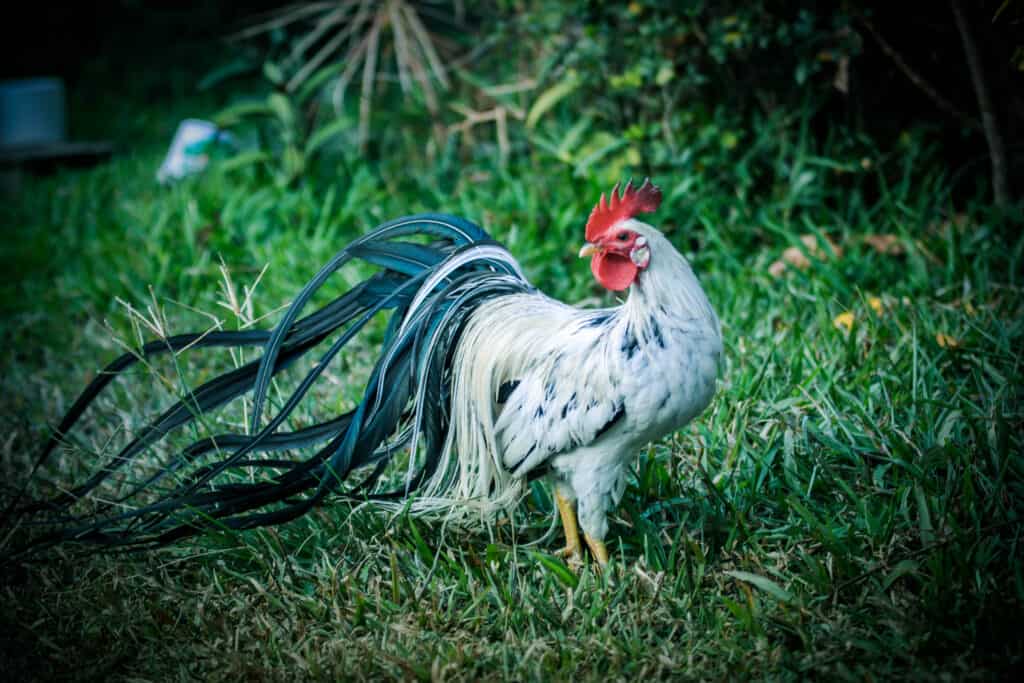
The Onagadori chicken is distinguished by its lengthy and unique looking tail..
©SARAWUT DEEPALA/Shutterstock.com
8. Dong Tao Chickens
The Dong Tao chickens, also known as Dragon Chickens, originate from the village of Dong Tao in Vietnam. One distinctive feature of these chickens is their muscular legs and large feet, which are compared to the thickness of a human’s wrist.
These odd-looking chickens are greatly valued for their meat, especially in Vietnamese cuisine. The sizeable legs and feet of Dong Tao chickens are in high demand among chefs who appreciate the meat’s unique potential. However, not everyone can enjoy its fine dining qualities because it has a mind-blowing price tag of $2,500.
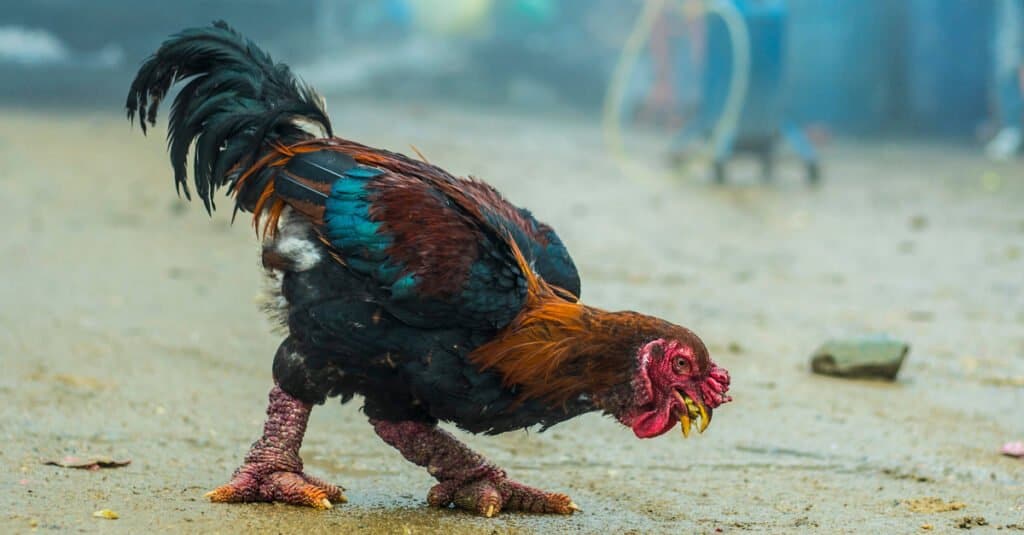
©Hoang Quoc Phuong/Shutterstock.com
9. Ixworth Chicken
Hailing from the breathtaking lands of Suffolk, England, the Ixworth chicken displays a crisp white appearance. These birds, which were bred by Reginald Appleyard in the 1900s, weigh between 7-9 pounds and produce more than 200 eggs per year.
Their friendly and calm personality makes them well-suited for different types of environments that include small spaces or large open areas of land. Despite experiencing a decrease in popularity due to the rise of specialized breeds. The Ixworth chicken’s rich history and practical importance have prompted efforts to preserve it.
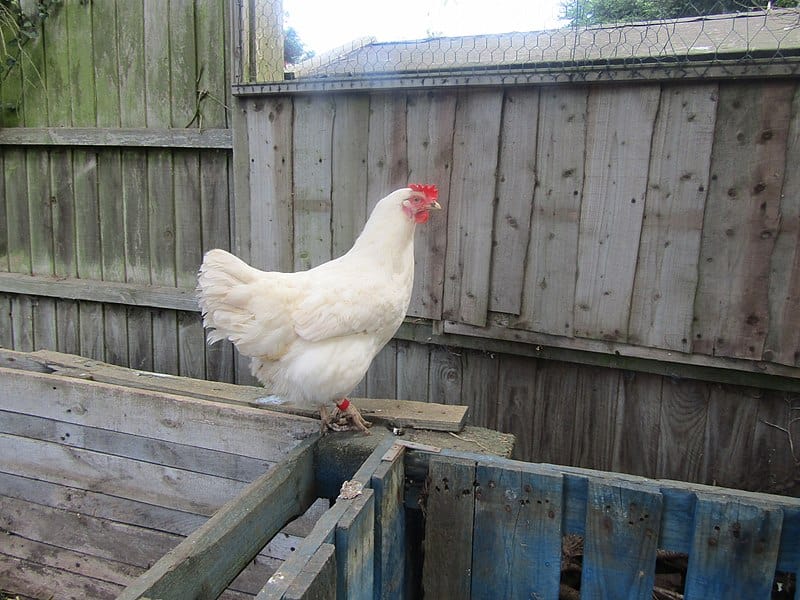
Ixworth Chicken
©The copyright holder of this file, Kolforn (Wikimedia), allows anyone to use it for any purpose, CC BY-SA 4.0, via Wikimedia Commons – License
10. Naked Neck Chicken
The Naked Neck chicken originated in Romania and has gained the interest of other people around the world. Because of its popularity, this rare chicken is also located in Europe, South America, and North America. This dual-purpose bird lays approximately 250 eggs each year and can withstand both hot and cold temperatures. The Naked Neck chicken is a match made in heaven for poultry farmers because of their versatility.
Interestingly, their necks do, in fact, serve an important purpose. The lack of feathers maintains their body temperature during hot weather by releasing extra heat. Furthermore, this feature is an extra bonus for poultry farmers as it saves them time during grooming days.
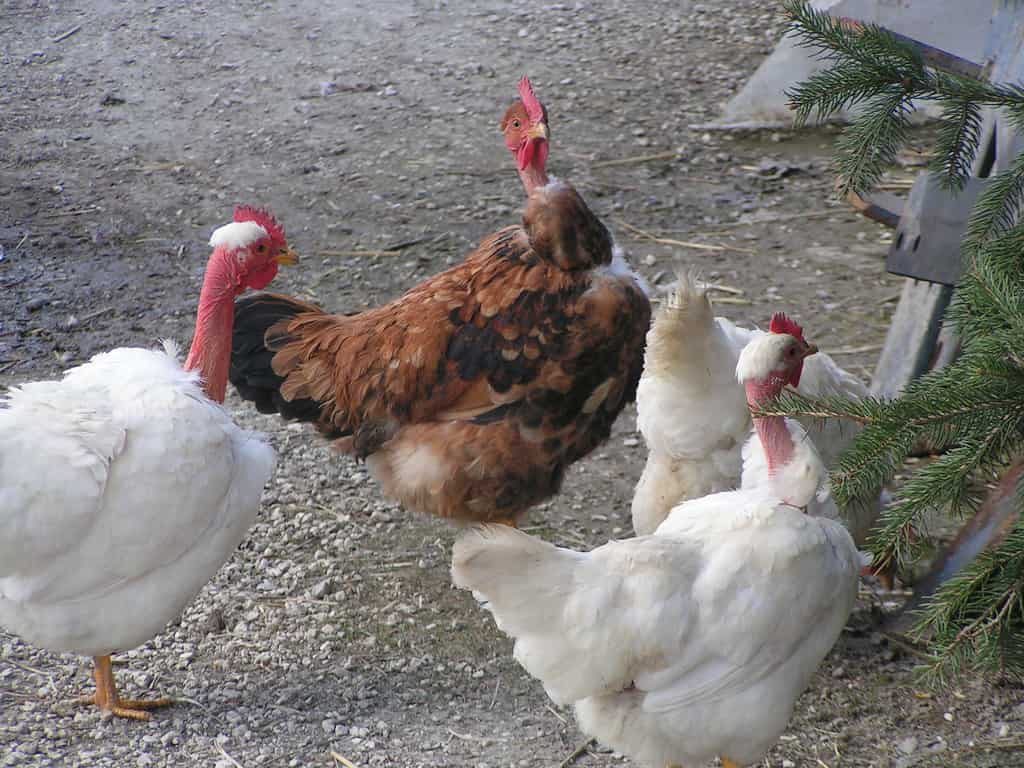
Naked Neck chickens have sparse feathers on the rest of their body.
©Simone Ramella / CC BY 2.0 – License
11. Silkie Bantam Chickens
These adorable bundles of feathers have their origin in China and come in a range of colors, such as black, blue, and even partridge. Silkie Bantams are not just attractive but have a reputation for being gentle and friendly. People often call them lap chickens because of their easy-going nature. Because they enjoy the close comfort of humans, these fluff balls make excellent pets.
In Chinese and Asian cultures, the Silkie Bantam is linked to good luck and wealth. According to tales, it is even believed that their colored skin possesses healing properties!
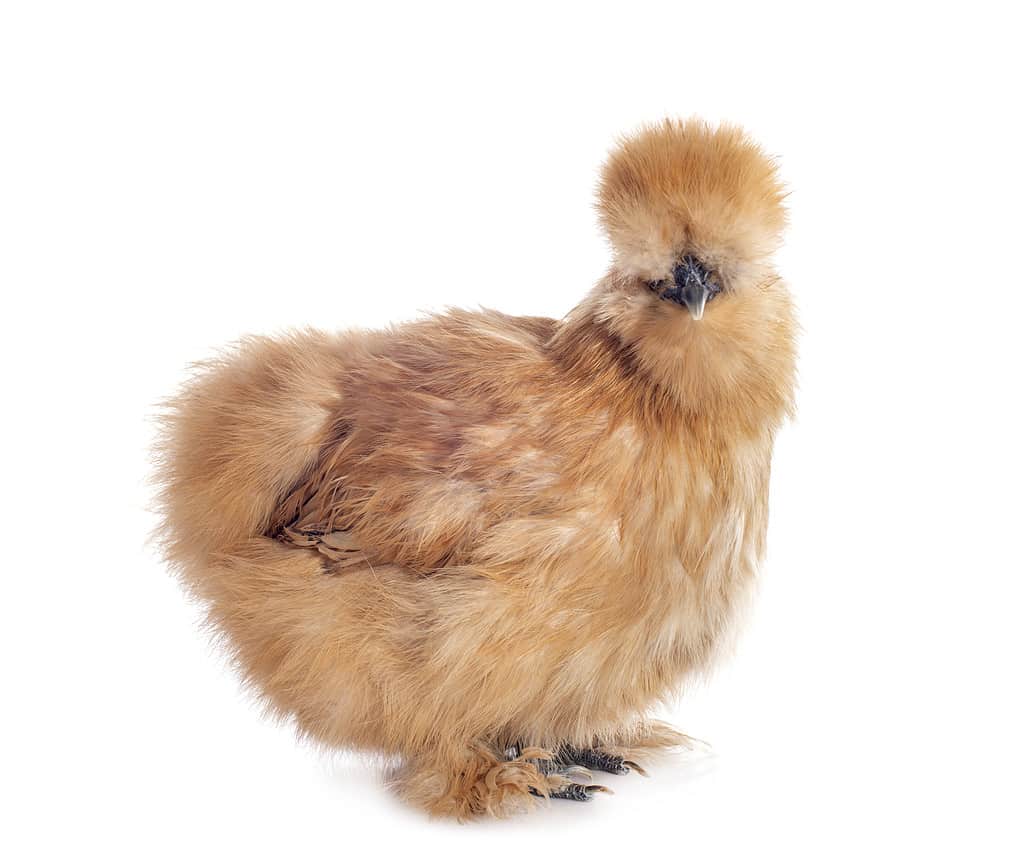
In Chinese and Asian cultures, the Silkie Bantam is linked to good luck and wealth.
©cynoclub/iStock via Getty Images
12. Serama Chicken
Originating from Malaysia, the Serama chicken proudly claims its name for being the smallest chicken on the planet. Weighing around 13-19 ounces and standing approximately 6-10 inches tall, Serama’s have captured the affection of many poultry enthusiasts.
Serama chickens lay tiny white or dark brown eggs with a production of 180-200 eggs each year. Because these chickens produce small eggs, their incubation period happens over 15-17 days. Furthermore, these tasty eggs serve as a great source of protein and are just the right size for the perfect bite-size snack.

Originating from Malaysia, the Serama chicken proudly claims its name for being the smallest chicken on the planet.
©sarun_J/Shutterstock.com
The photo featured at the top of this post is © illarionovdv/iStock via Getty Images
Thank you for reading! Have some feedback for us? Contact the AZ Animals editorial team.







